Frida Kahlo's studio and garden springs up in New York
- Published
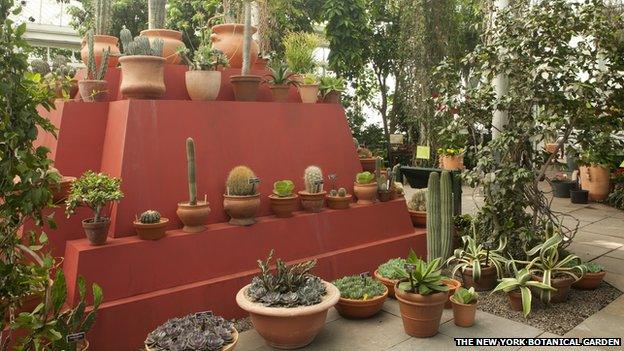
The Garden has a scale version of the pyramid at Kahlo's Casa Azul
Mexican artist Frida Kahlo's garden and studio have been recreated at the New York Botanical Garden.
Frida Kahlo: Art, Garden, Life is the first solo New York show dedicated to the artist for 25 years.
The exhibition includes original paintings by Kahlo which reflect the use of botanical imagery in her work.
Kahlo, who died 60 years ago, remains best known for her searing self-portraits and her use of intense, vibrant colours.
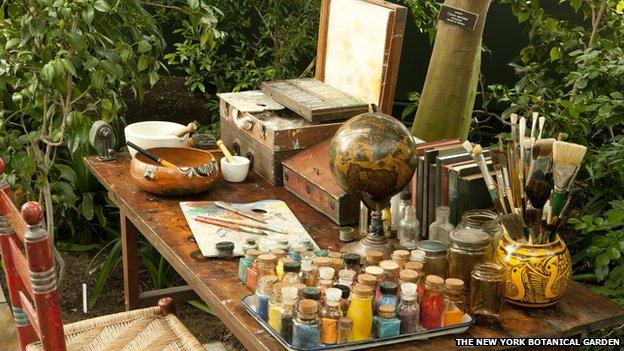
The show includes a recreation of Frida Kahlo's desk from her art studio
"We were inspired by Frida Kahlo's art but also by the artistry of her garden in Mexico City," said curator Joanna Groarke.
"We knew from studying her paintings that she was a careful observer of nature and plants, but we learnt when we studied her more that she was also a very passionate plants person."
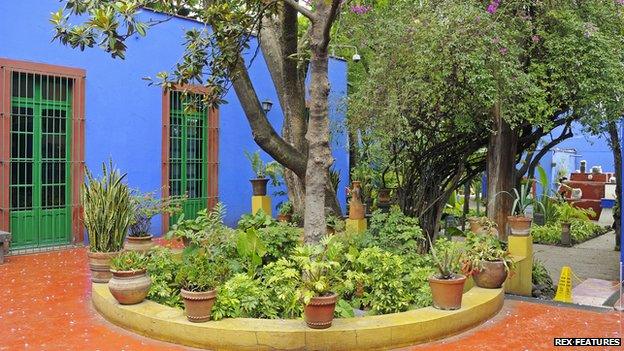
Frida Kahlo lived her whole life in the Casa Azul in Mexico
The Kahlo show, which runs to 1 November, sees the Botanical Garden's Enid A Haupt Conservatory transformed into Kahlo's family home Casa Azul (The Blue House).
It recreates the blue courtyard walls, a scale version of a pyramid created to display pre-Columbian art collected by her husband, muralist Diego Rivera, and Kahlo's studio.
The exhibition follows a similar project at the New York Botanical Garden in 2012, which re-imagined Claude Monet's flower and water gardens at Giverny.
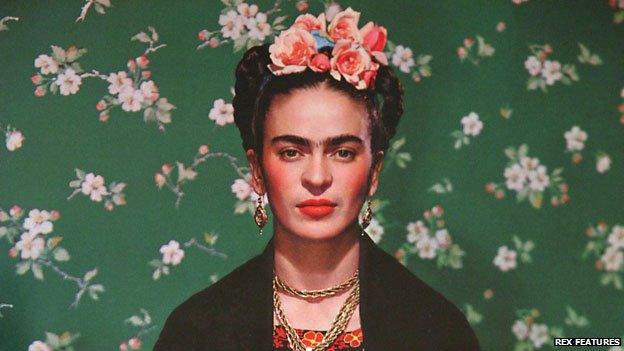
Frida Kahlo often used plants and other natural materials in her self-portraits
Kahlo lived her entire life, from 1907 to 1954, in the cobalt-blue house in Coyoacan, outside Mexico City.
She began to paint in 1925 while recovering from a bus accident that left her in constant pain and permanently disabled, leading to more than 30 operations.
Kahlo's inclusion of plants and nature in her work spans her entire career, but was most intensive during the 1940s and '50s when her health declined and she was increasingly confined to her home.
In recent years Kahlo's art has been feverishly sought by leading museums. Her face is featured on Mexico's 500-peso note and she was the subject of an Oscar-winning biopic in 2002.
- Published27 November 2013

- Published22 November 2012
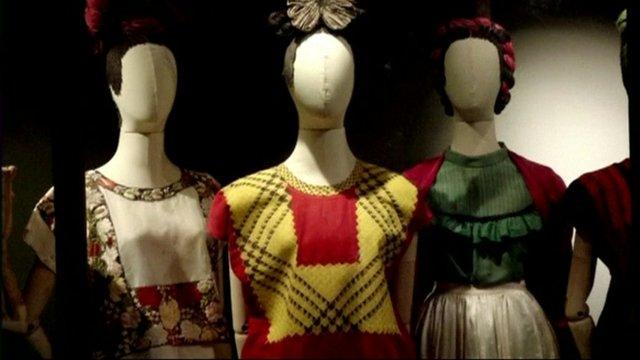
- Published25 September 2013
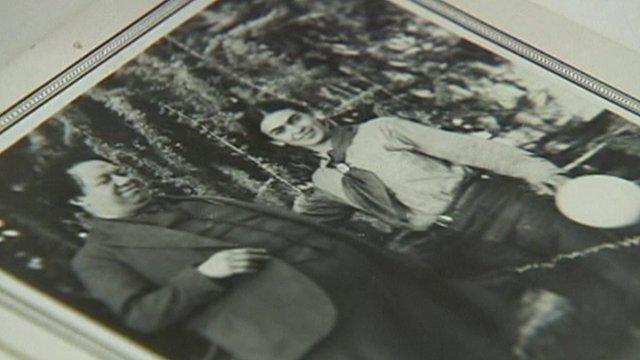
- Published17 October 2013
